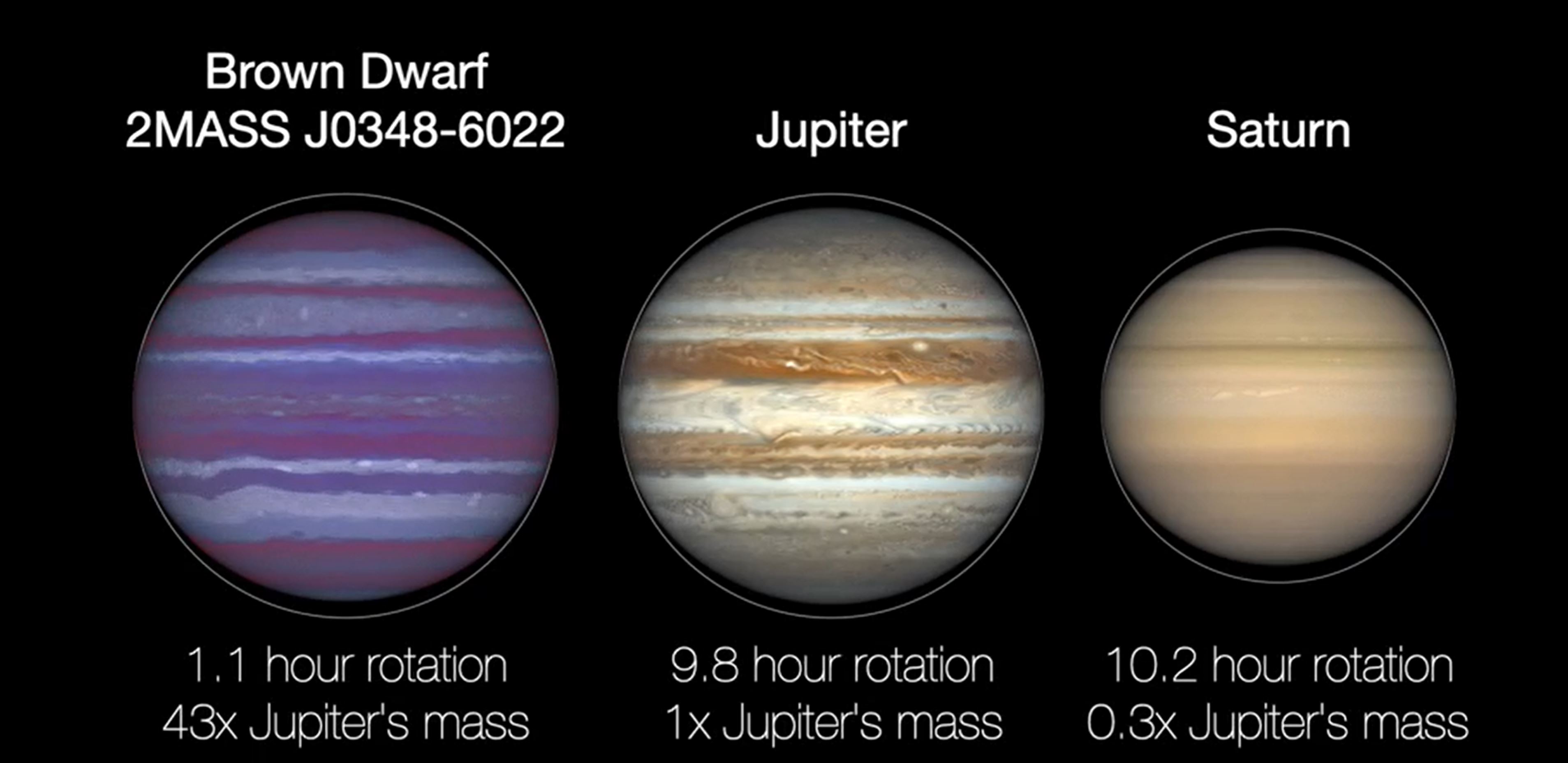These 3 spinning brown dwarfs are the fastest 'failed stars' ever seen
Astronomers have identified three brown dwarfs spinning faster than any others measured.
The fastest-spinning brown dwarfs ever found may point to a cosmic speed limit.
Brown dwarfs, which are sometimes called "failed stars," are more massive than most planets but not heavy enough to ignite like stars. Using data from NASA's Spitzer Space Telescope, scientists have identified three brown dwarfs that are spinning faster than any other found thus far, at one rotation per hour, according to a NASA statement. In a new study, astronomers concluded that these three rapidly-spinning brown dwarfs may be approaching a speed limit for all brown dwarfs.
All three brown dwarfs were discovered by a ground-based program that ended in 2001 called the Two Micron All Sky Survey, or 2MASS. In the new research, scientists used data from the now-retired Spitzer Space Telescope and telescopes operating on the ground. All three brown dwarfs are roughly the size of Jupiter and rotate once per hour, according to the new analysis, meaning that they spin at more than 60 miles per second (100 kilometers per second), or 220,000 mph (360,000 kph).
Gallery: The infrared universe seen by NASA's Spitzer Space Telescope

The three brown dwarfs are different temperatures, adding more evidence to the idea of a speed limit, according to the NASA statement. Brown dwarfs are spinning when they form (just like stars or planets), and as they age, cool down and contract they spin faster — much like ice skaters spin faster when they pull their arms into their bodies, the NASA statement explains. Yet, the three brown dwarfs studied in the paper are different ages, which we know because one is cold, one is warm, and one is in-between.
The new research suggests that, because the three worlds are different temperatures, they're likely approaching a speed limit beyond which brown dwarfs would break apart, flinging their contents out into space due to an overload of centrifugal force. In other astronomical objects, like stars, scientists have found similar natural "braking mechanisms" to prevent spinning too fast and bursting, according to the NASA statement.
Scientists don't yet know whether brown dwarfs have similar braking mechanisms, but the study authors suggest that the fact that all three of these brown dwarfs are spinning at one rotation per hour hints at such a mechanism.
Get the Space.com Newsletter
Breaking space news, the latest updates on rocket launches, skywatching events and more!
"It would be pretty spectacular to find a brown dwarf rotating so fast it is tossing its atmosphere out into space," Megan Tannock, a Ph.D. candidate at Western University in London, Ontario, and lead author on the new study, said in the NASA statement. "But so far, we haven't found such a thing."

That absence suggests that either something is slowing the brown dwarfs down or they just can't get that fast, she said.
As scientists look into whether brown dwarfs have a speed limit, it will become important to understand the interior of these astronomical objects. The maximum spin rate of any object depends not only on its mass, but how that mass is distributed, according to NASA. As a brown dwarf spins faster and faster, the material inside likely shifts and deforms, just as scientists have seen in some planets — Saturn, for example, has a perceptible bulge around the middle, called oblation. The paper authors believe brown dwarfs will have similar degrees of oblation.
Current models of how brown dwarfs should behave, based on what scientists know or suspect about their interiors, predict that the maximum brown dwarf speed should be about 50% to 80% faster than the one-hour rotation of these three.
More observation is needed to determine whether the brown dwarfs described in the paper have hit a limit at which their spinning stops accelerating or if there are brown dwarfs spinning still faster out there, waiting to be discovered.
The research is described in a paper accepted for publication in the Astronomical Journal that was posted to the preprint server arXiv.org on March 25.
Follow Kasandra Brabaw on Twitter @KassieBrabaw. Follow us on Twitter @Spacedotcom and on Facebook.
Join our Space Forums to keep talking space on the latest missions, night sky and more! And if you have a news tip, correction or comment, let us know at: community@space.com.

Kasandra Brabaw is a freelance science writer who covers space, health, and psychology. She's been writing for Space.com since 2014, covering NASA events, sci-fi entertainment, and space news. In addition to Space.com, Kasandra has written for Prevention, Women's Health, SELF, and other health publications. She has also worked with academics to edit books written for popular audiences.









